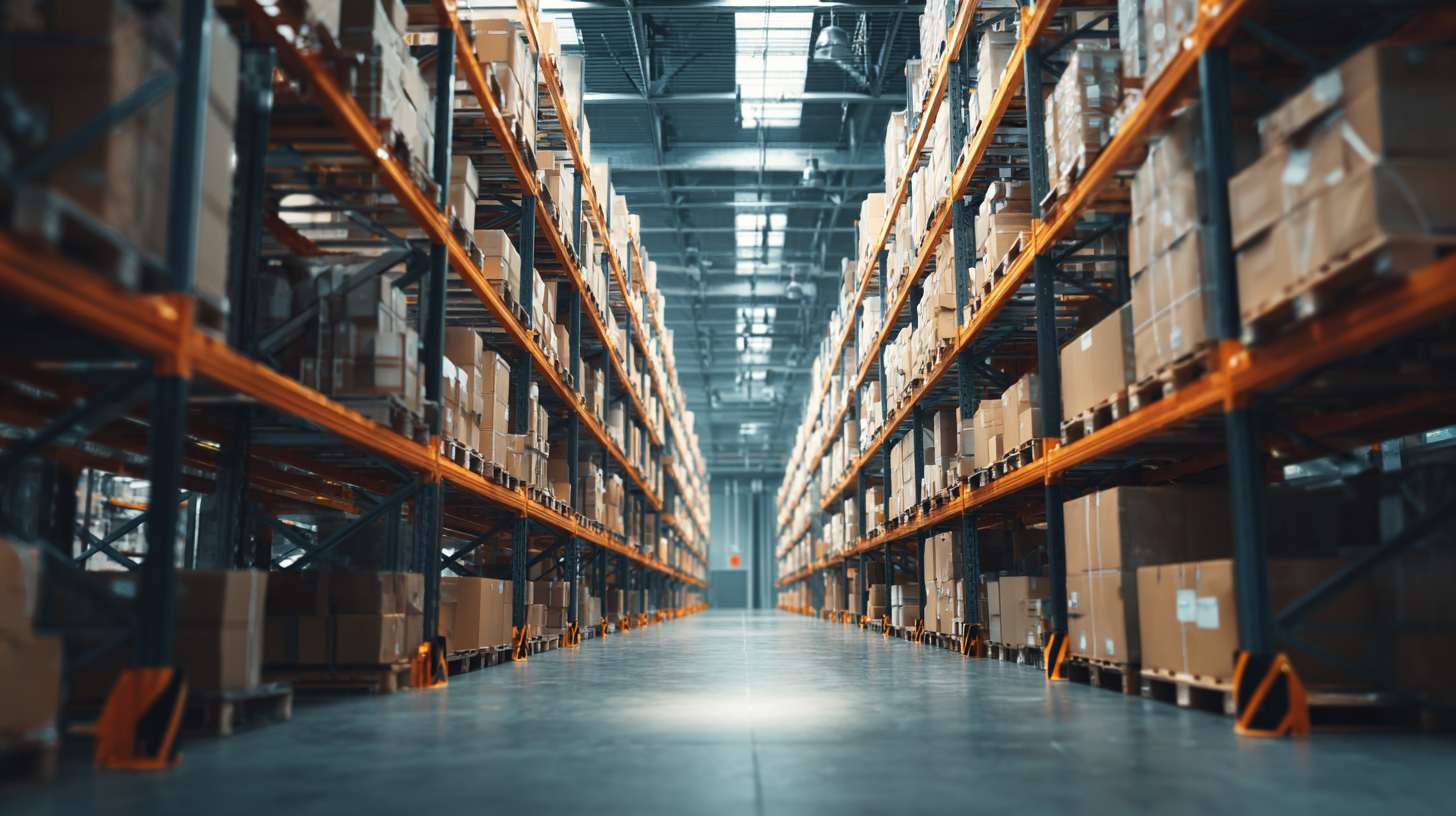In today's rapidly evolving business landscape, the role of 3rd Party Logistics (3PL) providers has become increasingly crucial in transforming supply chains across various industries. As companies strive to enhance operational efficiency and reduce costs, innovative 3PL solutions are emerging as game changers. These logistics partners are not just service providers; they are strategic allies that offer expertise in transportation, warehousing, and distribution, enabling businesses to focus on their core competencies. This blog will explore top strategies employed by leading 3rd Party Logistics companies and showcase innovative examples that highlight how these solutions are reshaping the way businesses manage their supply chains. By leveraging technology, data analytics, and customized services, 3PL providers are helping organizations navigate the complexities of modern logistics and achieve greater scalability and agility in an increasingly competitive marketplace.

The role of third-party logistics (3PL) providers has evolved dramatically, positioning them as strategic partners within modern supply chains. In a recent report by Armstrong & Associates, it was found that the 3PL market is projected to grow to $1.3 trillion by 2022, emphasizing the critical importance of these providers in enhancing efficiency and flexibility. By outsourcing logistics functions, companies can focus on core competencies while enjoying improved service and reduced operational costs. This shift is particularly vital in an era where consumer expectations demand faster delivery times and seamless experiences.

Moreover, the integration of advanced technologies like artificial intelligence and real-time data analytics by 3PL providers is transforming supply chain operations. According to a study from Grand View Research, the logistics technology market is expected to grow at a compound annual growth rate (CAGR) of 11.6% from 2021 to 2028. With the ability to optimize routes, manage inventory effectively, and predict market trends, 3PLs offer unparalleled agility. Businesses leveraging 3PL solutions are not only gaining competitive advantages but also enabling innovations that reshape how products reach consumers. This strategic collaboration is essential for navigating the complexities of today’s global market.
In today's fast-paced market, companies are turning to third-party logistics (3PL) providers to streamline their supply chains and achieve significant cost savings. Effective partnerships with 3PLs can help businesses reduce overhead costs associated with warehousing, transportation, and labor. By outsourcing these functions, companies can focus on their core activities while reaping the benefits of enhanced efficiency and flexibility.
One key tip for maximizing cost savings with 3PL partnerships is to conduct a thorough evaluation of potential providers. Look for a 3PL that specializes in your industry and has a proven track record of success. Establish clear communication channels and set measurable performance metrics to ensure that both parties are aligned on goals and expectations.
Another important consideration is leveraging technology. Implementing advanced logistics software can optimize inventory management and reduce shipping costs. Collaborating with a 3PL that uses cutting-edge technology will not only streamline operations but also provide valuable insights through real-time data analytics, enabling businesses to make informed decisions that drive further cost efficiencies.

In today's fast-paced market, third-party logistics (3PL) providers are at the forefront of transforming supply chain dynamics through data-driven decision-making. By leveraging advanced analytics, these logistics partners can gain deeper insights into inventory levels, shipping patterns, and customer preferences. This not only enhances operational efficiency but also allows businesses to anticipate demand fluctuations and respond proactively, minimizing disruptions.
Analytics tools empower 3PLs to analyze huge datasets, identifying trends that would otherwise go unnoticed. For example, predictive analytics can forecast seasonal demand spikes, enabling logistics providers to optimize their resources accordingly. Furthermore, real-time data tracking enhances transparency throughout the supply chain, allowing logistical processes to be fine-tuned continuously. With these insights, companies can make informed choices about where to allocate resources, ensuring timely deliveries and superior customer satisfaction. As the logistics landscape evolves, the role of analytics in 3PL success cannot be overstated, paving the way for more agile and resilient supply chains.
The landscape of supply chains is rapidly evolving, and third-party logistics (3PL) providers are at the forefront of this transformation. Recent reports indicate that 79% of companies that outsource their logistics operations experience reduced costs and improved efficiency. By leveraging advanced technologies such as AI and data analytics, 3PL providers can offer tailored solutions that enhance customer experience significantly. For instance, predictive analytics allows these logistics firms to anticipate demand fluctuations, ensuring that inventory levels meet customer expectations without overstocking.
Moreover, customer-centric 3PL solutions focus on real-time tracking and visibility, which is increasingly crucial for modern consumers. According to a McKinsey report, 62% of customers demand more transparency in the delivery process. By incorporating advanced tracking systems and seamless communication channels, 3PL providers ensure that customers remain informed and engaged throughout the shipping process. These innovations not only streamline operations but also foster loyalty, as satisfied customers are more likely to return, thus driving business growth in an increasingly competitive marketplace.
| Solution Type | Description | Key Benefits | Impact on Customer Experience |
|---|---|---|---|
| Automated Warehousing | Utilizing robotics and automation software for inventory management. | Improved accuracy, reduced labor costs, increased efficiency. | Faster order fulfillment, reduced errors in shipments. |
| Last Mile Delivery | Optimized delivery routes using AI and real-time data. | Reduced delivery times, lower transportation costs. | Enhanced customer satisfaction through timely deliveries. |
| Visibility Platforms | Real-time tracking systems for shipment monitoring. | Increased transparency, proactive issue resolution. | Better informed customers, increased trust in service. |
| Returns Management | Streamlined processes for product returns and exchanges. | Reduced return processing time, enhanced customer convenience. | Improved customer loyalty, simplified shopping experience. |
| Custom Packaging Solutions | Innovative packaging tailored to protect goods during transit. | Decreased damage rates, better space utilization. | Higher customer satisfaction with product condition upon arrival. |
In recent years, sustainability has become a critical focus for businesses across all sectors, including third-party logistics (3PL) operations. Innovative 3PL companies are adopting eco-friendly practices that not only reduce their carbon footprints but also enhance the efficiency of supply chains. For instance, some logistics providers are investing in electric and hybrid fleets, decreasing reliance on fossil fuels and minimizing greenhouse gas emissions. This shift not only benefits the environment but also responds to growing consumer demand for green logistics solutions.
Additionally, many 3PLs are implementing advanced technologies such as route optimization software and real-time tracking systems. These tools allow logistics managers to improve delivery routes, reducing fuel consumption and operational costs. Furthermore, the adoption of sustainable packaging materials is gaining traction within 3PL operations, as companies aim to minimize waste and increase recyclability. By aligning sustainability initiatives with their operational strategies, 3PLs are not only meeting regulatory requirements but also gaining a competitive edge in a market increasingly driven by environmental responsibility.






